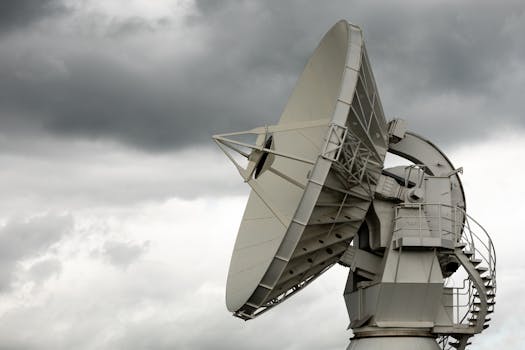GEO Satellites: Unlocking the Power of Geostationary Orbit
GEO satellites, or Geostationary satellites, are a type of satellite that orbits the Earth at an altitude of approximately 36,000 kilometers, which is about 1/10 of the way to the Moon. At this height, the satellite’s orbital period matches the Earth’s rotational period, allowing it to remain stationary in the sky. This unique characteristic makes GEO satellites an essential part of modern satellite technology, providing a wide range of services including telecommunications, weather forecasting, and navigation.
GEO satellites have a long history, dating back to the 1960s when the first geostationary satellite, Syncom 2, was launched. Since then, the technology has evolved significantly, with modern GEO satellites offering higher bandwidth, improved connectivity, and enhanced navigation capabilities. Today, there are over 500 GEO satellites in orbit, providing services to billions of people around the world.
Benefits of GEO Satellites
One of the primary benefits of GEO satellites is their ability to provide continuous coverage of a specific region. Because they remain stationary in the sky, GEO satellites can maintain a consistent signal, allowing for uninterrupted communication and data transmission. This makes them ideal for applications such as telecommunications, where a stable and reliable connection is crucial.
Another significant advantage of GEO satellites is their ability to provide high-gain antennas, which can transmit and receive signals with greater precision and accuracy. This is particularly important for applications such as navigation, where accuracy is critical. Additionally, GEO satellites can provide a wide range of frequencies, including C-band, Ku-band, and Ka-band, making them suitable for various applications.
Applications of GEO Satellites
GEO satellites have a wide range of applications, including telecommunications, weather forecasting, navigation, and Earth observation. In telecommunications, GEO satellites are used to provide internet connectivity, mobile phone services, and television broadcasting. They are particularly useful in areas where terrestrial infrastructure is limited or non-existent, such as in remote or rural areas.
In weather forecasting, GEO satellites are used to monitor weather patterns and provide early warnings for severe weather events such as hurricanes, typhoons, and tsunamis. They can also be used to monitor climate change, track ocean currents, and study the Earth’s atmosphere. Navigation is another critical application of GEO satellites, providing location information and timing signals for GPS, GLONASS, and other navigation systems.
Challenges and Future Developments
Despite the many benefits of GEO satellites, there are also several challenges associated with their use. One of the primary concerns is the risk of satellite congestion, as the number of satellites in geostationary orbit continues to grow. This can lead to interference between satellites, reducing their effectiveness and increasing the risk of collisions.
Another challenge facing GEO satellites is the issue of space debris. As the number of satellites in orbit increases, so does the amount of debris, including old satellites, rocket parts, and other fragments. This debris can pose a significant risk to operational satellites, as well as to the environment and human safety.
Despite these challenges, the future of GEO satellites looks bright. New technologies, such as electric propulsion and advanced materials, are being developed to improve the efficiency and sustainability of GEO satellites. Additionally, there is a growing trend towards the use of smaller, more agile satellites, which can provide greater flexibility and reduced costs.
In conclusion, GEO satellites are a vital part of modern satellite technology, providing a wide range of services and applications. Their unique characteristics, including their geostationary orbit and high-gain antennas, make them ideal for telecommunications, weather forecasting, navigation, and Earth observation. While there are challenges associated with their use, the future of GEO satellites is promising, with new technologies and innovations being developed to improve their efficiency, sustainability, and performance.

